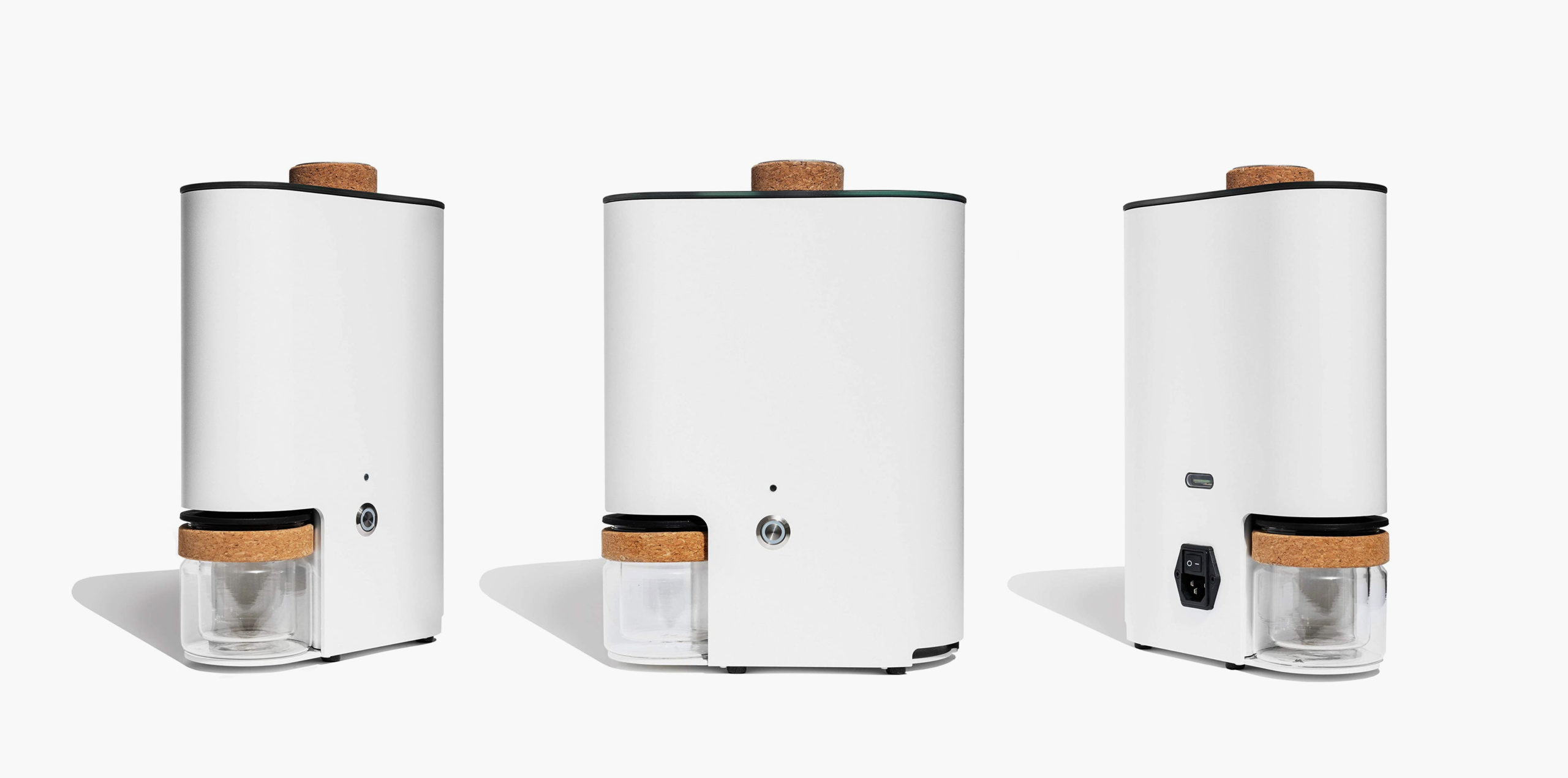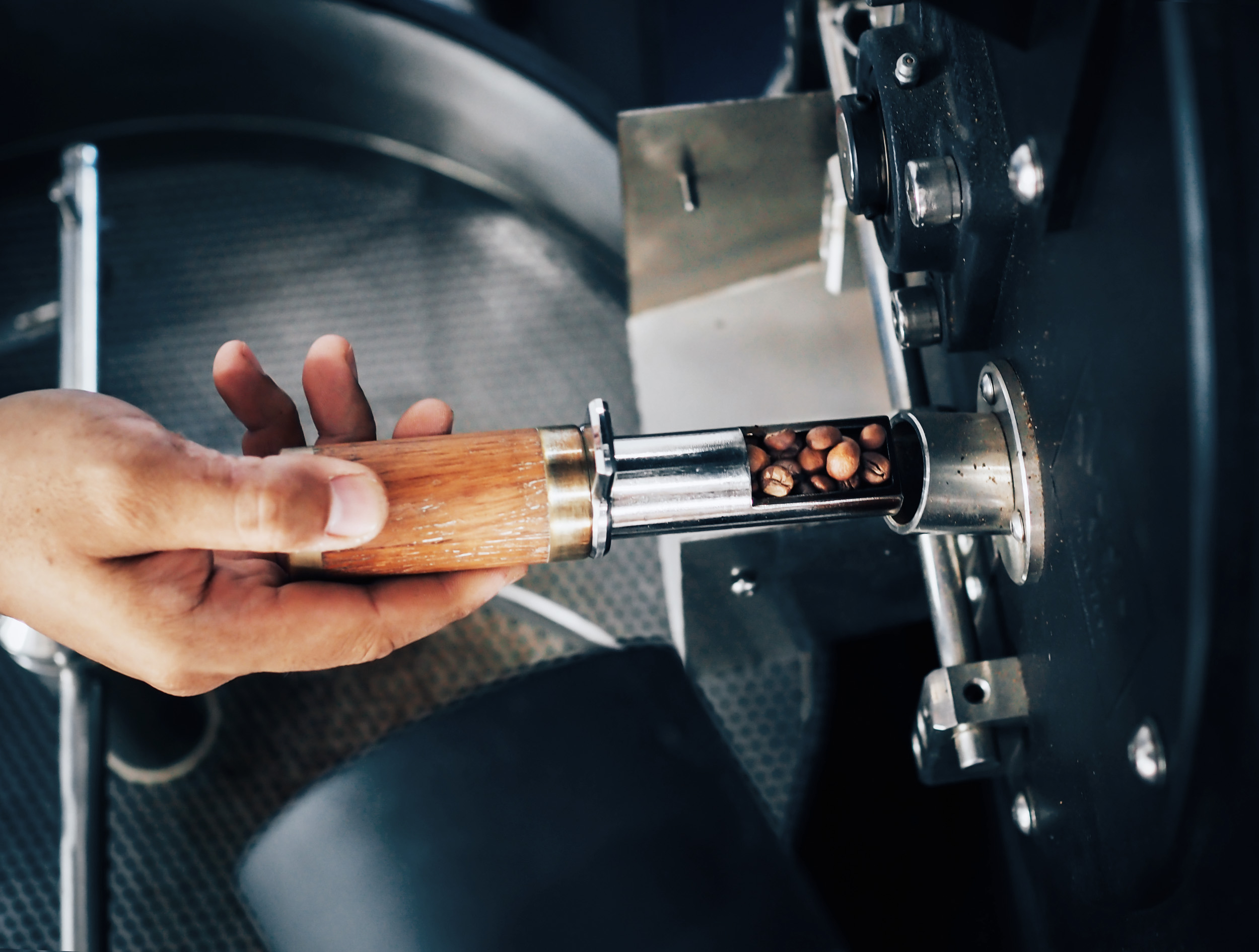Despite the invention of several new and more efficient types of roasting machine, the directly heated drum remains the most common type of roasting machine in use today. The well-established design and relative simplicity of these machines make them reliable and long-lasting, and many that were built in the early twentieth century are still in operation today.
The simple design and ready availability of spare parts means that, for a given size, drum roasters are usually cheaper to buy and service than other designs. However, they are large, heavy machines, with multiple moving parts. For small roasting machines, such as those used for sample or home roasting, other technologies, such as fluidised-bed roasting (aka fluid-bed roasting) can be more cost effective. We will explore fluidised-bed roasting systems from sample-sized to industrial scale, later in this chapter.
 For sample roasters, like this Ikawa, fluid-bed roasting or other technologies can be more cost-effective than drum roasting
For sample roasters, like this Ikawa, fluid-bed roasting or other technologies can be more cost-effective than drum roasting
Because directly heated drum machines have been in use for a long time, roasters have developed a lot of empirical knowledge about how to optimise the coffee’s flavour profile with this type of machine. It is much harder, if not impossible, to apply that knowledge to a completely different style of roasting. For example, roasters using a drum machine may examine bean samples in a trier or listen for first crack in order to determine the progression of a roast. This may not be possible in a fluidised-bed design which requires a sealed roasting chamber to operate. Most of the research about newer roasting technologies is focused on industrial-scale roasting, with an emphasis on maximising efficiency and yield rather than fine-tuning flavour profiles.
 A roaster using their ‘trier’ towards the end of a roast
A roaster using their ‘trier’ towards the end of a roast
The most important difference between directly heated drums and other types of roasting machines is the amount of heat transferred by conduction. In a typical directly heated drum, about 25% of the heat is transferred to the beans by conduction and 75% by convection (Clarke 1987).